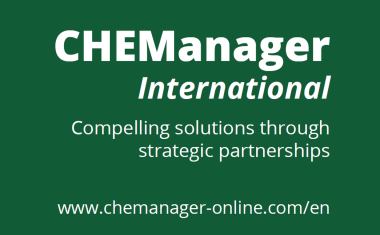China’s Midmarket



Raw Materials for the Middle Class - China's rapidly expanding midlevel market appeals to both multinational companies and to domestic chemical companies, though they approach it from different directions. Much has been written about the midlevel market in China - for products from cars and health care equipment to consumer goods and household appliances.
In the past, the Chinese market generally had two key segments. In the premium segment, global companies sold high-end products. In the much larger bottom segment, local companies provided low-quality products at low costs. Recently, however, the rising Chinese middle class and its distinct buying criteria have driven the growth of the midlevel segment. These customers focus on product safety, reliability and reasonable quality, which are getting more prominent to them as their income increases. At the same time, these buyers are still more cost-conscious than high-end customers.
Chemicals are affected because they are important starting materials for almost any kind of product, and the quality of the final product strongly depends on the quality of its chemical raw materials.
Both Sides Now
Facing intense competition and low margins in the low-end market, domestic chemical producers have started moving toward the more profitable midmarket. This particularly applies to established domestic companies that already have the expertise to provide sufficient product quality and service for this segment.
At the same time, multinational chemical companies realize that focusing exclusively on high-end chemical products limits their growth in China, so they also focus on the midmarket. Such a move is sometimes also taken as a pre-emptive attack on Chinese companies as they are expected to try to enter the high-end market eventually.
Local Versus Global
In pursuing the midmarket for chemicals, both domestic and multinational companies have specific strengths and weaknesses.
Chinese companies tend to have good access to local resources and often enjoy the support of local government. Their background in the low-end segment gives them substantial cost advantages even in the midmarket. Finding qualified staff at modest salaries is easier for them than for multinationals, as they do not require knowledge of foreign languages (most Chinese engineers have only limited knowledge of English.). Another major advantage is their broad distribution network outside of tier 1 and 2 cities, as it is already established for their low-end products. Finally, their local knowledge is superior, which allows them to better focus on core requirements of the midmarket.
However, Chinese companies frequently lack technological knowledge to reach the quality requirements of the midlevel. They tend to focus on increasing production volume rather than on improving product quality. Once they understand the quality requirements of the midmarket, they may still rely on Western specialty manufacturers to achieve key properties, undermining some of their cost advantage.
For multinational companies, attacking the midmarket means climbing down from their current high-end production. Therefore they do have sufficient technology and management expertise, and they easily understand the importance of quality in the midmarket. In addition, they own strong high-end brands that may also be utilized in the midmarket.
These multinational companies, however, lack local expertise and a sufficient distribution network outside the major cities. Their costs are generally higher than those of domestic companies, which is a much bigger issue in the price-sensitive midmarket than in the high-end segment. Finally, by entering the midmarket, they may endanger their own lucrative position in the high-end market, for example by cannibalizing their own brands.
Piercing The Midmarket
What do domestic and multinational companies need to do to successfully enter the midmarket? For multinationals, the three key issues are obtaining a cost position that allows profiting from the midmarket, achieving sufficient distribution, and protecting the high-end market.
The first one generally means localizing as many parts of the value chain as possible including production, sourcing of raw materials and reducing the number of expatriate employees.
The second, extending the distribution network, is necessary as potential midmarket customers are more regionally dispersed than the premium customers. At the same time, the lower margins in this segment make the involvement of third-party distributors less attractive.
Thirdly, protecting the profitable premium segment means that the offerings made to the high-end segment cannot just be extended to the midlevel but need to be clearly differentiated, which in effect means they need to be reduced.
An established way to achieve such a differentiation is with a second brand, such as Dow Corning's Xiameter. The offerings sold under this brand are standard silicones, and sales are online only. Technical service is non-existent. Thus cost-conscious customers can obtain standard silicones at lower prices while service-conscious premium customers are prevented from switching to the Xiameter brand. The Xiameter brand now accounts for about 30 % of silicone sales and is being extended.
Another way for a multinational company to establish a second brand in China is to acquire a domestic company. AkzoNobel did this with the acquisition of Prime, a well-established Chinese producer of auto refinish coatings for the midmarket. This approach gives AkzoNobel immediate access to the customer and distribution network of the acquired company and thus speeds up the presence in the midmarket.
In contrast, the key challenges for domestic companies to pursue the midmarket are to establish their brand, to improve product quality, and to provide technical service in line with the demands of the midmarket.
The first challenge of brand building can be done by way of traditional marketing. It may also be promoted by cooperation with established multinational companies (e.g., research cooperation, ingredient branding etc.). The second, product improvement, can partly be achieved by investment in research. In fact, several domestic companies such as Yip (in acetate solvents) and Sinorgchem (in rubber chemicals) recently established R&D centers that will in the long run improve the offerings of these companies. Additional improvement potential is in the establishment of state-of-the-art production facilities and quality control.
Finally, depending on the chemical segment, domestic companies may have to improve their technical service offerings to be successful in the midmarket.
Localize To Lead
So who is more likely to dominate the Chinese midmarket in chemicals in the near future, multinational or domestic companies? Only companies that are highly localized will be successful in this segment as it is both price-sensitive and local in its requirements. Therefore only domestic companies or multinationals with a high degree of localization have a realistic chance of becoming the market leaders.
Company
Managm. Consult. ChemicalsRM1302, 13/F CRE Bldg.
Wanchai, Hong Kong
China
most read

Ratcliffe: Chemical Industry in Europe at a Tipping Point
Ineos CEO Ineos calls on European politicians to save the chemical industry.

CHEManager International Media Kit 2026
Compelling solutions through strategic partnerships

Merck Acquires Chromatography Business from JSR Life Sciences
Merck to acquire the chromatography business of JSR Life Sciences, a leading provider of CDMO services, preclinical and translational clinical research, and bioprocessing solutions.

BASF Sells Majority Stake in Coatings Business
BASF sells a majority stake in its coatings business to the investor Carlyle.

Dow to Shut Down Three Upstream European Assets
Building on the April 2025 announcement, Dow will take actions across its three operating segments to support European profitability, resulting in the closure of sites in Germany and the UK.











